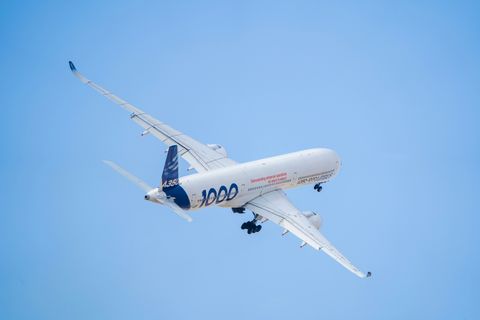What is a black box and how does it work?

From the first days of photographic film to the cutting-edge era of solid-state memory, flight recorder technology has undergone a remarkable evolution. This progress has yielded not only greater reliability and data integrity but also enhanced accessibility and analysis capabilities, ensuring that every piece of recorded information can be meticulously scrutinised for insights.
Learning lessons from accidents and serious incidents is one of the foundations of aviation safety and an ethical necessity to prevent recurrence. Accident recorders were developed to understand what happened and why, therefore determining how to prevent the scenario from happening again.
Flight recorders store data (aircraft parameters) and sound (pilot, copilot, radio communications and the cockpit ambient noise). The recording device is crash-protected up to a certain level. It is resistant to fire, explosion, impact and water immersion.
Orange rather than black
The genesis of flight recorders traces back to the 1930s, when the French engineer François Hussenot began working on a data recorder equipped with sensors optically projecting around ten parameters onto a photographic film.
This film ran continuously in a light-tight box, hence the name 'black box', which has survived over the years, even though the equipment is orange rather than black. In fact, orange was its chosen colour from the outset, as it makes it easier to identify the metal case.
Since those pioneering days, flight recorder technology has undergone constant refinement, with each iteration incorporating lessons learned from past incidents. After several technology evolutions like magnetic tapes, today's solid-state recorders use stacked memory chips, which eliminates moving parts and therefore reduces the risk of breakage in an accident.
Technical progress has enabled flight recorders to record and store an increasing amount of data. While the A300B2’s black boxes had a capacity of around 100 parameters, those of the A350 can manage around 3,500 parameters for 25 hours, including information on cockpit command inputs and displays, flight controls, autopilot, air conditioning, fuel systems, hydraulic and electrical systems, engines and more.
All these developments have contributed to enhanced durability and expanded data storage capacity, and the aeronautical industry continues to innovate in pursuit of the highest safety standards.

Data streaming
To avoid the risk of not finding the black boxes of aircraft laying in deep waters and being deprived of the data they contain, Airbus and the other players in aviation safety are exploring other solutions. One of these is data streaming. Continuous satellite broadcasting makes it easy to rapidly get flight data. The solution is being studied by the ICAO, taking into account different aspects such as the size of the satellites’ bandwidth, confidentiality and data security.
Automatic deployable flight recorder
Automatic deployable flight recorders are another option that Airbus is developing. The idea is to install a unit in the tail area of the aircraft that combines the flight data recorder, cockpit voice recorder and an integrated emergency locator transmitter (ELT). This unit is deployed during an accident if sensors detect airframe deformation or immersion in water. The crash-protected recorder is designed to survive the impact and float on the water, while transmitting its position and allowing search and rescue services to more rapidly rescue any survivors and find the wreckage.
Autonomous Distress Tracking
Airbus has introduced a new-generation ELT device with autonomous distress tracking capabilities on its commercial aircraft. This new feature is designed to ensure that an aircraft does not become lost while in a distress situation. For more information on distress tracking, read more in our safety innovation series article #12: Aircraft Autonomous Distress Tracking.
Combined (voice & data) recorders
To meet the ICAO requirement of increasing voice recording time from 2 to 25 hours, the A320 Family aircraft offer two new recorders that combine flight data and cockpit voice recording functions in a single device capable of storing voice and text communications, and flight data. On the long-range aircraft families, one of these cockpit voice and data recorders (CVDR) will be automatically deployable.
Finding voice and data flight recorders and successfully downloading, decoding, validating and analysing the recorded data are key steps in an investigation. They support the overall picture of the event and are an indispensable tool in identifying and addressing the causes and contributing factors of an accident or incident. The evolution of flight recorder technologies over the last few decades has supported the accuracy and reliability of safety investigations.

And what about helicopters?
Helicopters, too, are equipped with a (single) combined recorder. This unit is capable of recording all the data needed to characterise the flight (time, heading, altitude, power, temperature, rotor speed, outside temperature, etc.), tracking between 800 and 1200 parameters. On heavy helicopters (>3175 kg maximum take off weight) they can withstand a temperature of 1100°C for one hour (just like those on aircraft). Those on light helicopters must withstand this temperature for 15 minutes.



